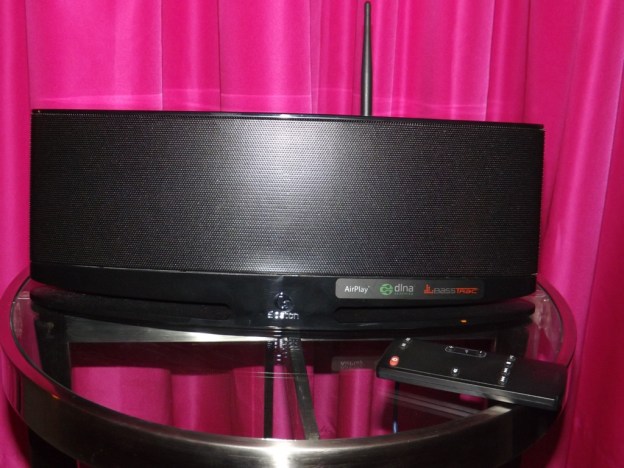
Check out our full review of the Boston Acoustics MC200Air speaker.
Yesterday, Boston Acoustics held a press event in NYC to announce its new MC200air. The AirPlay-enabled, DLNA-certified, Wi-Fi-ready MC200air is one of the latest in what has become a very long line of speaker docks, but Boston Acoustics has managed to create something that stands out. You can control the unit via an included IR remote, or an associated smartphone app, but however you choose to direct your content, this speaker sounds spectacular.
The first thing that struck us about its sound signature was that it felt deep, rich – layered if you will. Background and foreground tones are distinct, resulting in a ubiquitous sound which stands in stark contrast to the directional delivery of lower-end speakers. The goal of this sound isn’t enormity, but rather immersion. Boston Acoustics’ team says it accomplished that end – in part – via a subtle and barely noticeable design feature. Citing the fact that most people tend to place their speakers below ear level, they tilted the MC200air’s face upward, so that the sound from the two 3.5-inch full-range woofers travels upwards and outwards. This gives the music an elevated, ear-level feel, almost as if you were cozied up right next to the speaker.
The frequency response sits at 70Hz-20KHz, which stands to reason given its size. It is capable of delivering some low end, but bottom-dwelling deep-bass lows aren’t this speaker’s forte. USB, Aux, Ethernet, and AC ins line the back panel of the simple, flexible, gloss-black (or white) unit and though yesterday was the MC200air’s official coming out party, it’s on the market already in select stores. Its $400 price point isn’t an easy pill to swallow, but if you’re in the market for a high-end AirPlay option, we think it’s worth that kind of cash.
We should also note that -as an added bonus – the speaker can simultaneously play and charge all recent iOS devices via a 30-pin apple USB cable (or a lightning adapter for the iPhone 5).
Editors' Recommendations
- What is AirPlay 2? Apple’s wireless sharing system explained
- Amazon is trying to prove that AirPlay and Chromecast don’t matter
- Chromecast vs. Apple AirPlay 2
- How to turn any speakers into AirPlay speakers with an Apple Airport Express


